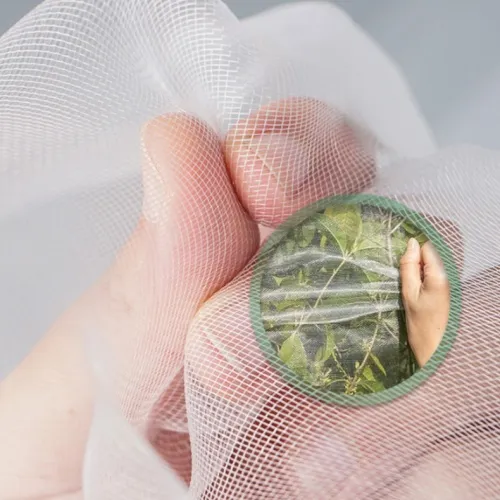-
 Afrikaans
Afrikaans -
 Albanian
Albanian -
 Amharic
Amharic -
 Arabic
Arabic -
 Armenian
Armenian -
 Azerbaijani
Azerbaijani -
 Basque
Basque -
 Belarusian
Belarusian -
 Bengali
Bengali -
 Bosnian
Bosnian -
 Bulgarian
Bulgarian -
 Catalan
Catalan -
 Cebuano
Cebuano -
 China
China -
 Corsican
Corsican -
 Croatian
Croatian -
 Czech
Czech -
 Danish
Danish -
 Dutch
Dutch -
 English
English -
 Esperanto
Esperanto -
 Estonian
Estonian -
 Finnish
Finnish -
 French
French -
 Frisian
Frisian -
 Galician
Galician -
 Georgian
Georgian -
 German
German -
 Greek
Greek -
 Gujarati
Gujarati -
 Haitian Creole
Haitian Creole -
 hausa
hausa -
 hawaiian
hawaiian -
 Hebrew
Hebrew -
 Hindi
Hindi -
 Miao
Miao -
 Hungarian
Hungarian -
 Icelandic
Icelandic -
 igbo
igbo -
 Indonesian
Indonesian -
 irish
irish -
 Italian
Italian -
 Japanese
Japanese -
 Javanese
Javanese -
 Kannada
Kannada -
 kazakh
kazakh -
 Khmer
Khmer -
 Rwandese
Rwandese -
 Korean
Korean -
 Kurdish
Kurdish -
 Kyrgyz
Kyrgyz -
 Lao
Lao -
 Latin
Latin -
 Latvian
Latvian -
 Lithuanian
Lithuanian -
 Luxembourgish
Luxembourgish -
 Macedonian
Macedonian -
 Malgashi
Malgashi -
 Malay
Malay -
 Malayalam
Malayalam -
 Maltese
Maltese -
 Maori
Maori -
 Marathi
Marathi -
 Mongolian
Mongolian -
 Myanmar
Myanmar -
 Nepali
Nepali -
 Norwegian
Norwegian -
 Norwegian
Norwegian -
 Occitan
Occitan -
 Pashto
Pashto -
 Persian
Persian -
 Polish
Polish -
 Portuguese
Portuguese -
 Punjabi
Punjabi -
 Romanian
Romanian -
 Russian
Russian -
 Samoan
Samoan -
 Scottish Gaelic
Scottish Gaelic -
 Serbian
Serbian -
 Sesotho
Sesotho -
 Shona
Shona -
 Sindhi
Sindhi -
 Sinhala
Sinhala -
 Slovak
Slovak -
 Slovenian
Slovenian -
 Somali
Somali -
 Spanish
Spanish -
 Sundanese
Sundanese -
 Swahili
Swahili -
 Swedish
Swedish -
 Tagalog
Tagalog -
 Tajik
Tajik -
 Tamil
Tamil -
 Tatar
Tatar -
 Telugu
Telugu -
 Thai
Thai -
 Turkish
Turkish -
 Turkmen
Turkmen -
 Ukrainian
Ukrainian -
 Urdu
Urdu -
 Uighur
Uighur -
 Uzbek
Uzbek -
 Vietnamese
Vietnamese -
 Welsh
Welsh -
 Bantu
Bantu -
 Yiddish
Yiddish -
 Yoruba
Yoruba -
 Zulu
Zulu
Effective Strategies for Safeguarding Crops Against Hail Damage in Agricultural Practices
Plant Hail Protection Safeguarding Our Greenery
Hailstorms can be devastating events for farmers and gardeners alike, causing significant damage to crops and ornamental plants. The unpredictability of these weather phenomena makes it imperative to understand effective protection strategies. Plant hail protection is a vital topic that seeks to mitigate the negative impacts of hail on various types of greenery.
Hail is a form of precipitation that falls as ice pellets. These pellets can vary in size, sometimes reaching up to the size of a golf ball, and they can fall at high speeds, creating a significant threat to plant health. When hail strikes, it can bruise, tear, or even completely uproot plants, leading to a devastating loss. As the climate changes, hailstorms are likely to increase in severity and frequency, making the need for efficient protection methods more critical than ever.
One of the most common methods of plant hail protection is the use of physical barriers. Hail nets, which are specially designed nets that can be draped over plants, serve as effective shields. These nets are typically made from high-density polyethylene and can absorb the impact of hail, significantly reducing the damage to the plants beneath. They allow sunlight and rain to penetrate while providing a strong defense against hail.
In addition to hail nets, some farmers have turned to greenhouse structures as a comprehensive solution for protecting crops not only from hail but also from other weather-related issues. Greenhouses create a controlled environment that shields plants from extreme weather conditions, including hail, while also extending the growing season. However, the cost and maintenance of greenhouses can be a barrier for some, making hail nets a more accessible option.
plant hail protection

Another innovative approach is the use of protective covers or blankets made from fabric materials. These covers can be placed over plants prior to an expected hailstorm. While this method may not be as strong as hail nets, it provides a temporary shield and can protect delicate plants during severe weather events. The versatility of such covers makes them a practical choice for small-scale gardeners or those tending to high-value ornamental plants.
Additionally, technology plays a crucial role in modern plant hail protection. Weather forecasting apps and services can provide timely alerts about impending hailstorms. By utilizing these resources, gardeners and farmers can quickly take protective measures to safeguard their plants. The integration of smart sensors that detect weather changes can also enhance response times, allowing for proactive protection strategies.
Consideration of plant selection is equally important in the context of hail protection. Some plants are more resilient to hail damage than others. Educating oneself on which species can withstand impacts can help minimize losses in the event of a hailstorm. Researching local advisories on best practices and plant types can guide gardeners in making informed decisions.
In conclusion, plant hail protection is an essential aspect of successful gardening and farming in regions prone to hailstorms. Through the use of physical barriers like hail nets and protective covers, as well as embracing technological advancements for timely alerts, individuals can significantly reduce the impact of hail on their plants. As we face increasingly unpredictable weather patterns, investing in these protective measures will ensure the health and viability of our beloved greenery for years to come. The key lies not just in safeguarding against current challenges, but also in preparing for a resilient future.
-
Shipping Plastic Bags for Every NeedNewsJul.24,2025
-
Safety Netting: Your Shield in ConstructionNewsJul.24,2025
-
Plastic Mesh Netting for Everyday UseNewsJul.24,2025
-
Nylon Netting for Every UseNewsJul.24,2025
-
Mesh Breeder Box for Fish TanksNewsJul.24,2025
-
Expanded Steel Mesh Offers Durable VersatilityNewsJul.24,2025











